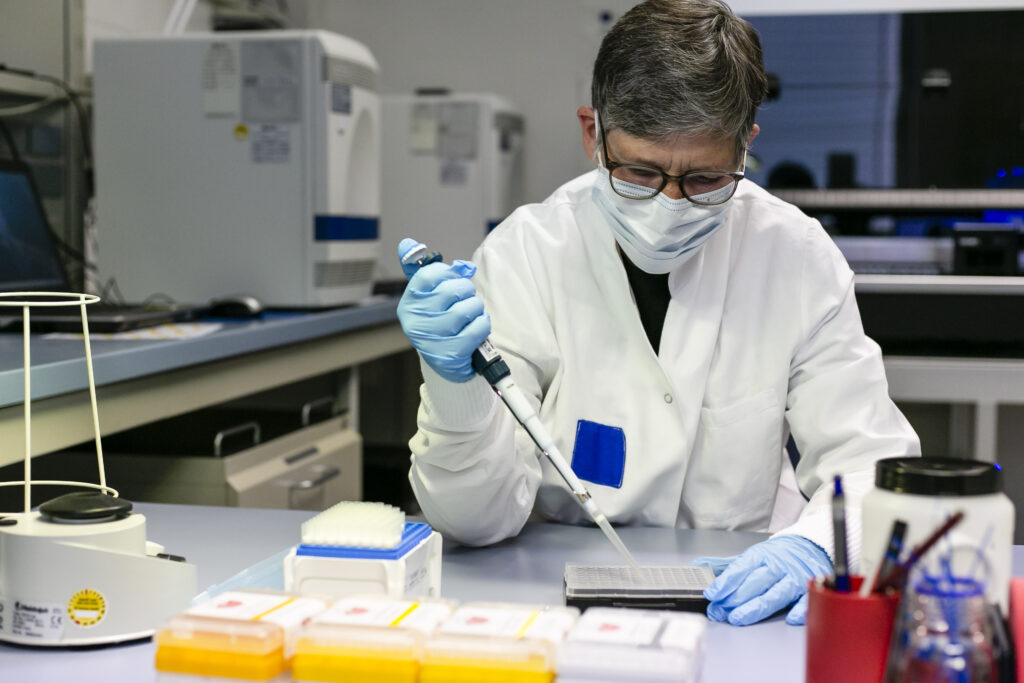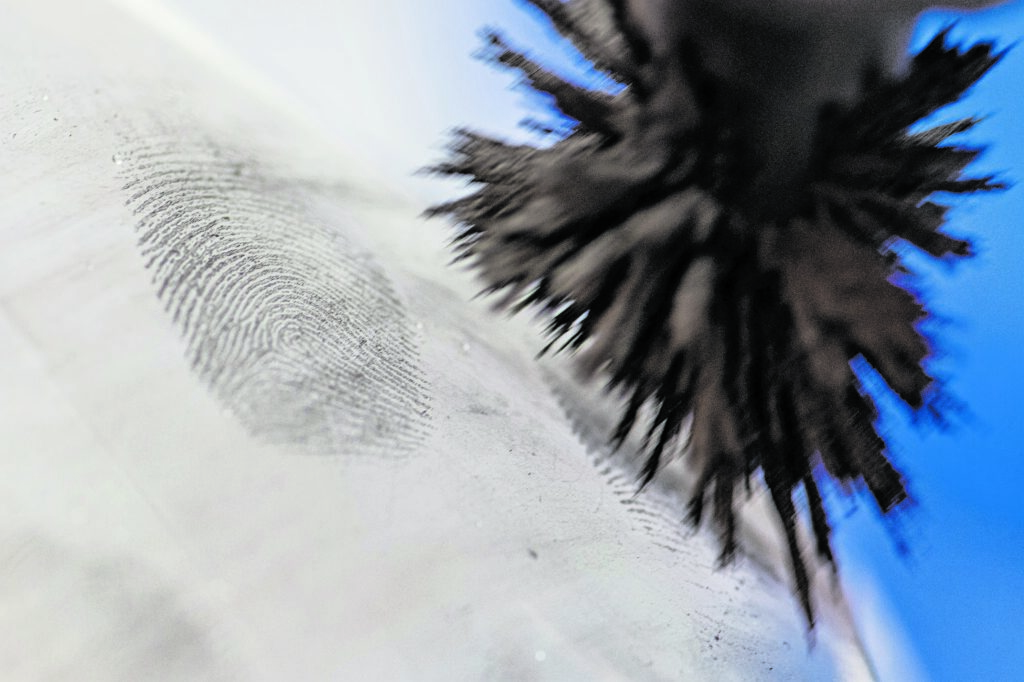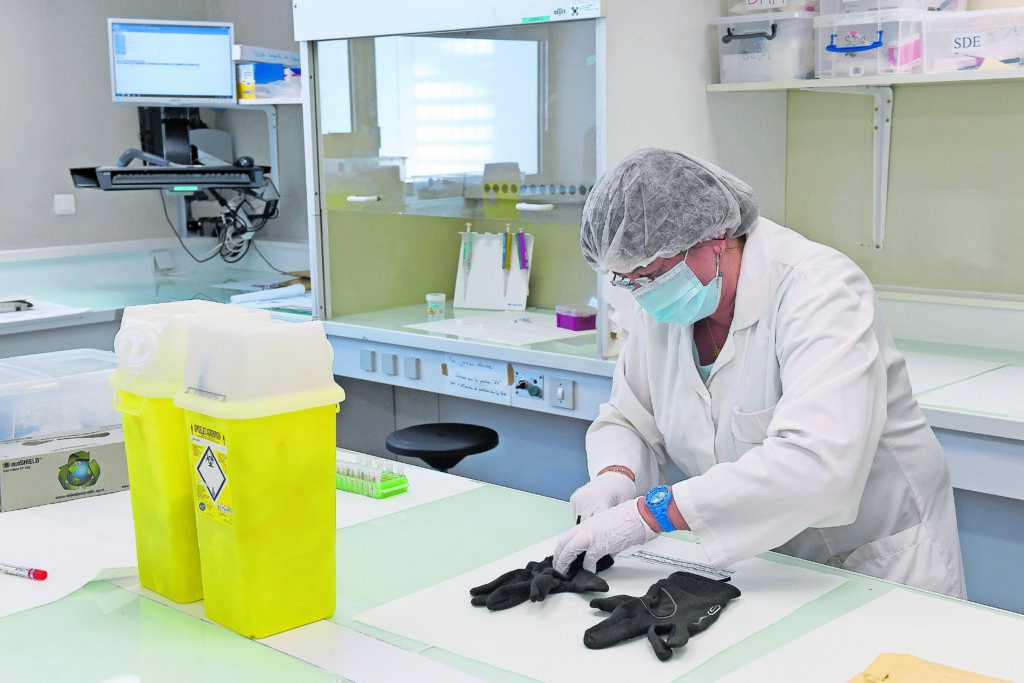Searching for clues: A forensic expert looks for human remains in a pit in Serbia that is believed to contain the bodies of ethnic Albanians killed during the 1998-99 war. (Photo by Sasa Djordjevic/AFP)
At the core of the criminal justice system lies a big responsibility: suitably punishing perpetrators of crimes and exonerating the innocent. Although this sounds like a straightforward undertaking, misleading forensic evidence has proven to be one of the biggest systematic defects — one that has cost many innocent people their freedom.
Although relatively reliable in most instances, forensics can be subject to several errors, inconsistencies, and biases, which has resulted in the wrongful arrests of innocent people.
According to the peer-reviewed study published by professors Adebola Olaborede and Lirieka Meintjes-van der Walt, “The Dangers of Convictions Based on a Single Piece of Forensic Evidence”, in 2019, investigating officials have often been found to depend on a single piece of evidence to convict suspects when, in fact, there should be a strong substantiation, with additional forms of evidence linking the accused to the crime.
Advancements in science have come a long way in expanding the scope of forensic gathering techniques — from DNA analysis, which is considered the “gold standard” for forensic-feature comparison methods, followed by fingerprint analysis, bite-mark analysis, microscopic hair analysis and firearms identification.
These are used in many jurisdictions around the world to bring justice to some the most heinous crimes, such as sexual assault and murder.
Wrongful arrests cost state
The United States keeps a National Registry of Exonerations that has recorded 2 500 wrongful convictions since 1989; in South Africa, such shortcomings are made clear by the large sums of money spent on civil claims related to wrongful convictions.
In 2016, the South African Police Service (SAPS) revealed that it had paid out more than R854-million for wrongful arrests and detention between 2009-10 and 2015-16.
Subsequent years saw a substantial annual increase in civil claims, reportedly because of illegal detentions, use of unnecessary force by police, inadequate training and lack of compliance with standing orders.
In the 2015-16 financial year, the SAPS paid out R290-million in civil claims against the police. The total claims made amounted to R14.6-billion, of which R7.3-billion was cancelled or reduced, with the other claims still pending.
In March this year, police were ordered to pay R5-million in damages to a man in the Eastern Cape for arresting him for no reason at all.
But incompetence and police brutality are not the only reason why people are wrongfully convicted.
One piece of a bigger puzzle
Expert evidence is the backbone of the criminal justice system. It is evidence that is scientifically based and is used by courts when prosecuting cases in which they do not have the requisite technical or specialist knowledge.
Expert witnesses use forensic techniques by gathering and scrutinising all crime-related physical evidence to make a conclusion about a suspect.
If someone has been murdered, for instance, a bite mark or fingerprints found at the crime scene are not enough on their own to determine that the person is guilty. Each piece of forensic evidence is just one part of the bigger puzzle and the courts cannot come to a conclusive decision until all the necessary forensic examinations are applied.
A single piece of forensic evidence is not always reliable, firstly because of human error. Secondly, although forensic evidence is grounded in science, there is a lack of adequate scientific validation of the methods employed.
Judge Jacob de Villiers, former chief justice of South Africa (from 1929 to 1932) is frequently cited saying: “The uncorroborated evidence of a single competent and credible witness is no doubt declared to be sufficient for a conviction by section 284 of Act 31 of 1917, but in my opinion that section should only be relied on where the evidence of the single witness is clear and satisfactory in every material aspect.”
Evidence reliability
In the US, the prosecution assumes the burden of proof and is required to prove its case beyond reasonable doubt. This means that all reasonable doubt must be removed in the minds of a jury that a defendant is guilty of the crime for which they are charged. Expert evidence must be both relevant and reliable in this regard.
Reliability in this case compels courts to question the practical research foundation of all expert testimony. Has this technique or theory been tested; has it been subjected to peer review and publication; is there a known potential rate of error of a particular scientific technique?
Additionally, is the testimony based on sufficient facts or data; is it the product of reliable principles and methods; and has the expert reliably applied those principles and methods to the facts of the case? These are all requirements highlighted under rule 702 of the Federal Rules of Evidence.
 Dr Sabine Grein, a biochemist at Germany’s State Office of Criminal Investigation. (Photo: Frank Molter/dpa)
Dr Sabine Grein, a biochemist at Germany’s State Office of Criminal Investigation. (Photo: Frank Molter/dpa)
South Africa, on the other hand, draws on English law, with evidence being admissible whenever it is relevant.
However, law scholars Gary Edmond and Meintjes-van der Walt point out that the reliability of evidence “will be explored effectively during trial, through cross-examination and or by expert evidence that may be adduced by another party”.
Moreover, South Africa, like England and Wales, does not have clear standards regarding the admissibility of scientific evidence. There is no admissibility requirement that scientific evidence should be valid or reliable. If scientific evidence cannot be logically supported, it can be discredited by the defence and the court.
South Africa also does not (yet) have a reliable database for wrongful convictions, such as the Innocence Project and the National Registry of Exonerations in the US. Finding case examples specific to each technique, in which a conviction was made because of misleading results from that analysis, is difficult because that information is highly classified.
Partial DNA profiles
Human beings are believed to have DNA that is 99.9% identical: the remaining 0.1% is what makes us each unique. There is a 1% difference between chimpanzees and humans, which means a small difference can mean a huge deal.
But, according to a Jstor Daily article published in 2017, DNA is often damaged because of moisture or extreme temperatures. When this occurs, only some of the critical markers will be available and only a partial profile is generated.
The author, Naomi Elster, said that: “Put simply, if a DNA profile is a complete description of a person’s appearance, a partial profile might describe only one of their traits — hair colour, for instance.” She further explains that partial profiles will match with more than one person, unlike to a full profile. She states that a more rigorous statistical approach is the “likelihood ratio”, which directly compares two hypotheses: the likelihood of the DNA coming from the suspect vs the likelihood of the DNA coming from someone else.
False positives in fingerprints
Experts have long believed that fingerprint analysis is infallible. That would make sense, because it has already been established that no two people can have the same fingerprints. Experts use seven points from one finger to compare similarity to another finger, but there is no consensus or standard with regards to matching points of similarities.
 Fingerprints are secured in a forensic laboratory. (Photo: Armin Weigel/dpa)
Fingerprints are secured in a forensic laboratory. (Photo: Armin Weigel/dpa)
Studies also claim that the process of fingerprinting is subjective, and that it leaves room for potential bias that can affect the examiner.
“For example, a forensic scientist who has been provided with extraneous information, such as the suspect’s ethnicity, previous criminal record, eyewitness identification or other types of evidence, can potentially bias the examiner throughout the course of their analysis,” noted toxicologist Benedette Cuffari in her journal article, “Forensic Confirmation Bias (Cognitive Bias in Forensics)”.
Furthermore, no testing has been conducted that shows the statistical significance of a match to establish the likelihood of two prints being the same. Statistically speaking, fingerprint analysis has been found to have a higher rate of false positives than other forensic methods.
Bite-mark analysis
Experts known as forensic odontologists collect bite marks and use dental casts, computer enhancements, photography, clear overlays, electron microscopy and swabbing for serology to test for a match.
Bite-mark analysis is based on the principle that dental characteristics, particularly the front teeth, differ considerably between people. Secondly, the skin can reliably capture these characteristic features that imply uniqueness. But other experts remain sceptical about the accuracy of these premises.
Olaborede and Meintjes-van der Walt quote the National Academy of Science Report, which notes that the “uniqueness of the human dentition and the ability to transfer a unique pattern to human skin, as well as the ability of the skin to maintain that uniqueness has not been scientifically established”. According to a Medical Brief article, forensic dentists claim that they can accurately associate a bite mark to the one and only set of teeth in the world that could have produced it. There is, however, no sound basis for believing that this is possible.
Microscopic hair analysis
Experts examine and compare features of hair to establish if they match the accused. This technique is based on the premise that human (and animal) hair is regularly shed and can be transferred between two individuals.
Most courts have accepted hair analysis because it is claimed to “yield reliable information about class characteristics of hair strands, which can help to narrow down a possible source of unknown hair”, said Olaborede and van der Walt.
But microscopic hair analysis is also considered highly unreliable.
 Painstaking work: A lab technician for the National Institute for Forensics of Marseille in France runs tests to identify samples of scant traces of DNA. (Photo by Boris Horvat/AFP)
Painstaking work: A lab technician for the National Institute for Forensics of Marseille in France runs tests to identify samples of scant traces of DNA. (Photo by Boris Horvat/AFP)
“Many of the characteristics are subjective, such as colour (is it yellow, yellow-brown, or brown?), pigment distribution (uniform, peripheral, one side, clusters) and cortical texture (fine, medium, coarse). A re-examination of a hair, by the same or a different examiner, can result in different descriptions of hair characteristics,” said biostatistics professor Jim Norton and statistician William Anderson in their study “Flawed forensics: Statistical failings of microscopic hair analysis”.
Firearms identification
Firearms identification, otherwise known as ballistics, determines whether ammunition is connected to a firearm recovered at a crime scene. Experts can establish if a specific firearm is the source of a particular bullet, cartridge case, shot shell casing, or slug found at a crime scene.
“Each tool mark has individual characteristics that may be uniquely associated with a specific tool or firearm and are reproduced by the same specific tool or firearm,” said Olaborede and Meintjies-van der Walt.
Again, it is a question of whether there is scientific evidence available to determine the degree to which firearm-related tool marks are unique.